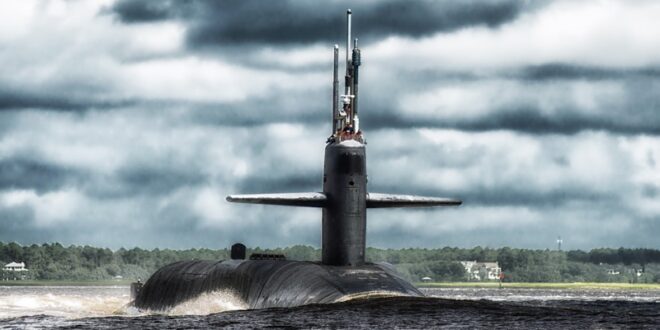A historical analogy may be necessary to fully understand the looming conflict between Chinese authoritarianism and the uneasy democracies of the world. In the run up to the First World War, Germany pursued a combination of militarism, overbearing diplomacy, nationalism and brinkmanship in order to achieve policy goals, despite the risk of war.
An observer of contemporary geopolitics would not fail to note the similarities between 20th century Germany and 21st century China, particularly from the point of view of China’s dazzling economic growth, the military muscularity which is central to its geopolitical vision, ambitions, nationalism, and its realpolitik instincts. A critical assumption of China’s leadership is that this new era of rejuvenation will progress as per the script, meaning questionable economic deals and coercion. However, this assumption is flawed. A clash is brewing, unintended as it may be, for nationalism and predatory economics are as much a source of conflict as counterforce and economic rivalry.
The strategic culture of Chinese leadership is driven by two dynamics: Confucian ideology and realpolitik. The former is a legacy of China’s past, while the latter draws strength from the rigidity of a totalitarian dispensation and its propensity to ‘power-politics.’ This presents a dangerous cocktail. The Confucian ideology treasures virtue and conservatism; it depends largely on the sagacity of the autocrat to speak for society. However, for an unrepresentative nationalistic state, realpolitik places power and the threat of its use central to the conduct of international relations. Beijing’s territorial claims coupled with its leadership’s strategic culture provide both incentive and contrivance for conflict.
China’s economic policies are predatory, which is a key reason behind the opacity of its dealings. The Chinese Communist Party (CCP) is opposed to any inconvenient transparency that might compel the standardisation of products and divulgence of processes. The Belt and Road Initiative (BRI), which was to deliver billions of dollars in infrastructure financing to countries in Asia, Africa and Europe, has turned into a massive debt trap.
To interpret China’s international and domestic behaviour, one needs to look over the ‘Great Wall’ and beyond the ‘Long March’. The former was conceived to hold back northern raiders, yet its completion over 1,800 years came, ironically, a time when invaders ruled the country. On the other hand, the ‘Long March’ was a bloody retreat in a civil war that underscored great human loss and ruthless control. Both events were inwardly ‘racking’, and even when viewed from a retrospective lens, they do not provide any basis to advocate for the use of power in today’s strategic environment. No surprises, then, that the CCP readily resorts to strong-arming when it perceives a window of vulnerability or a closing window of opportunity in potential victims.
China’s geopolitical aims are not secret. President Xi Jinping wants to consolidate China’s control over important lands and waterways that the “century of humiliation” ostensibly wrested from its influence. These areas include Hong Kong, Taiwan, chunks of Indian territory, and 80 per cent of the East and South China Seas. Contradictions erupt when the use of force is tempered by tenets of Confucian thought. That is why, for instance, the Korean War ended in a caustic stalemate; the purpose and outcome of the Vietnam war of 1979 remains clouded; the frenetic creation of artificial islands for military bases in the South China Sea tramples on established international norms and the recent skirmishes in Ladakh remain a continuum of the impasse of 1962. We stand, perilously, on the cusp of an era of turbulence.
On cue, in response to China’s aggressive historical manoeuvres, the announcement of a new trilateral alliance between Australia, UK and the US (AUKUS) and the continuing strategic security dialogue between Japan, Australia, India and the US (Quad) has made it amply clear that countering China in the Indo-Pacific is their number one priority. Ironically, Beijing’s recent White Paper titled “National Defence in a New Era” outlined its territorial ambitions in the South and East China Seas, Yellow Sea, Taiwan, and Ladakh, and warned of its willingness to use force if its ambitions were threatened.
The more visible part of AUKUS is the transfer of eight nuclear-powered submarines (SSN). Clearly, the SSNs will not be available to Australia for the next decade and a half, but the transfer provides the basis for denial operations in these waters and gives access to a host of futuristic capabilities. AUKUS’ mission is complemented by the Quad presenting a new security architecture that combines military and economic prowess among states that share the vision of a free and rules-based Indo-Pacific. The resolve to undertake strategic confrontation against revisionism is thus emphasised. The balance of power adherents, with justification, consider a visible demonstration of collective power as the only way to dampen Beijing’s aggressive expansionism.
That these initiatives have made China edgy is clear. from immediate declarations in the media and politics. In a speech to commemorate the CCP’s centenary, Xi vowed that those who get in the way of China’s ascent will have their “heads bashed bloody against a Great Wall of steel.”
States have become less enthused by China’s markets and more worried about its disturbing strategic intent. Fearing forced unification, Taiwan is tightening its ties to the US. In another example, Japan is engaged in its largest military build-up since the Cold War. India is readying strike forces along China’s borders, developing strategies to occlude vital sea lanes in the Indian Ocean, and has engaged partnerships that threaten China’s vulnerabilities. Australia is opening its northern coast to US forces. France, Germany, and the UK are sending warships into the Indo-Pacific to assert their strategic rights. In the meantime, China’s dubious role in the spread of the COVID-19 pandemic has left it beleaguered.
We began with a pre-First World War analogy of Germany. One may surmise that given the nuclear overhang, China’s rise, with its burden of a ‘century of humiliation’, will demand a strategy moderated by tolerance and accommodation, rather than by the principles of the past. But the other truth is that the fear of war, to authoritarian regimes such as China, co-exists with belligerence and exalted nationalistic feelings. This also boosts profitable involvement in the incessant preparedness for war, even as it advances a concern for the survival of dispensation. Herein is China’s striking resemblance to pre-First World War Germany. It demonstrates the necessity of collaring China through unified actions that threaten regime survival and challenge its bellicosity in the Indo-Pacific.
 Eurasia Press & News
Eurasia Press & News




